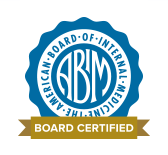“Quad-Strength” Levophed: What It Really Means — And When It Matters

If you’ve rounded in the ICU long enough, you’ve heard someone call for a “quad-strength Levo.”

It’s not in any package insert, order set, or FDA label—but it’s in every intensivist’s vocabulary. Let’s unpack what it means, why we use it, and what trivia lies behind it.
🧪 The Standard Mix
By official FDA labeling, Levophed® (norepinephrine bitartrate) comes in a 4 mg/4 mL vial. The classic dilution:
- Mix that vial into 1,000 mL of D5W or D5 ½NS,
- Yielding a 4 mcg/mL solution—our standard strength.
That’s what you’ll find on most floor infusion pumps, in textbooks, and in ACLS drug tables.

⚙️ The “Quad-Strength” Variant
“Quad-strength” refers to a four-times-more-concentrated formulation—16 mcg/mL—made by diluting the same 4 mg/4 mL vial in 250 mL of compatible fluid (typically D5W).
From what I can find, it’s not an FDA-approved term, but it’s ubiquitous shorthand in ICUs and ERs across the U.S.
| Formulation | Typical Dilution | Final Concentration | Use Case |
|---|---|---|---|
| Standard | 4 mg in 1000 mL | 4 mcg/mL | Most patients |
| Quad-Strength | 4 mg in 250 mL | 16 mcg/mL | Fluid-restricted, high-dose vasopressor needs |
💡 Why Go “Quad”?
- Fluid Restriction:
When you’re resuscitating a patient who’s already 6L positive, the last thing you want is another liter of carrier fluid just to deliver vasopressors. - High-Dose Levo:
Severe septic or cardiogenic shock often requires doses >30–40 mcg/min. A more concentrated solution avoids maxing out the pump’s flow rate and pressure limits. - Pump Efficiency:
ICU pumps have maximum flow capacities—quad-strength allows precise titration at lower flow rates.
⚠️ Safety Pearls
- Not for Peripheral Infusion:
Quad-strength should be infused through a central line whenever possible. The higher concentration increases risk of extravasation injury. - Clear Labeling Is Critical:
Dosing errors are the main hazard—especially during inter-unit transfers or when switching lines. Always label bags clearly with “16 mcg/mL” and verify the dose rate in mcg/min or mcg/kg/min. - Compatibility & Stability:
The solution remains stable for 24 hours in D5W and is compatible with most central-line co-infusions, though not all Y-site combinations have been studied. Avoid alkaline or bicarbonate-containing solutions.
🧠 The Backstory of “Quad-Strength” Levophed
- 💉 The Original Mix Was for Glass Bottles — Not Pumps
When norepinephrine was first approved by the FDA in 1950, it was prepared in glass bottles with rubber stoppers and administered via gravity drip, titrated by watching drops per minute. The now-standard 4 mcg/mL dilution made sense back then—it allowed visible titration and avoided early vasospasm from higher concentrations. The term “quad-strength” was born decades later, when infusion pumps became standard in the 1980s–1990s. (though introduced in 1960s…) - 🏆 The Nobel Connection
Levophed entered clinical use shortly after Ulf von Euler discovered the neurotransmitter norepine and showed that it is stored in vesicles. He won the 1970 Nobel Prize for this discovery. Early literature referred to the drug as arterenol or levarterenol—terms still seen in mid-century journals and packaging.
“…on their liberation during stress conditions.”
- 📦 “Quad-Strength” = ICU Dialect
The phrase originated informally in ICU pharmacist–nurse shorthand, paralleling similar “quad” labels used for dopamine and epinephrine mixes. Each meant “four times standard”—a practical language for concentration scaling. - 🩸 The Volume Paradox
Early septic shock trials used liters of D5W daily just for vasopressors.
- 🚑 Flight Medicine Origin Story
Aeromedical and ECMO transport teams helped popularize quad-strength Levo—they needed potent pressors in tiny volumes to avoid pump alarms or flow pressure limits during - 🧬 Fun Fact: The “Levo” in Levophed
“Levo” refers to the levo-rotatory optical isomer of norepinephrine, the biologically active form. Its mirror twin, dextro-norepinephrine, has minimal adrenergic effect—hence the name Levophed (“levo” + “to raise”).

🎗️ Remember
- “Quad-strength” isn’t an official concentration, but a practical workaround for modern ICU realities: high-dose shock states and fluid restriction.
- Always verify your pump’s dose mode (mcg/min vs. mcg/kg/min) when switching concentrations.
- Document the concentration clearly in both the MAR and handoff notes.
- Concentrated Levo doesn’t change the pharmacodynamics—just the vehicle that delivers it.
🥼 Doctor’s Order
Quad-strength Levophed = 16 mcg/mL, made by diluting 4 mg in 250 mL of D5W — four times the standard 4 mcg/mL mix.
Use it when patients need powerful pressor support but can’t tolerate volume.
Respect its potency, label it meticulously, and always run through central access.

References
- LEVOPHED (norepinephrine bitartrate) Injection, USP. U.S. Food and Drug Administration. Updated June 12, 2025.
- von Euler US. Nature. A Sympathomometic Pressor Substance in Animal Organ Extracts. 1946;157:25–26.
- ISMP Medication Safety Alert. Norepinephrine Concentration Errors. 2010.
- Rivers E, et al. NEJM. 2001;345:1368–77.
- Sokoloff et al. The Role of l-Norepinephrine in the Treatment of Shock. Medical Clinics of North America, March 1954;38:499-514.




Member discussion